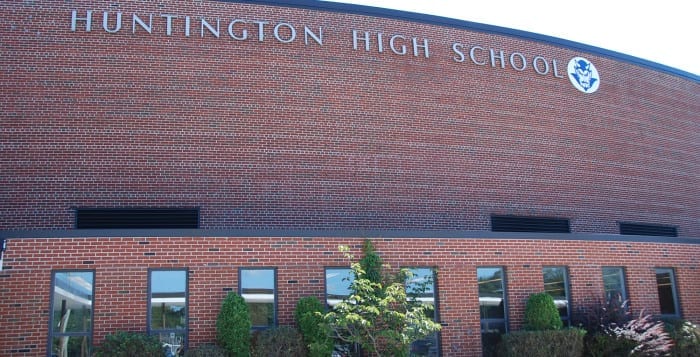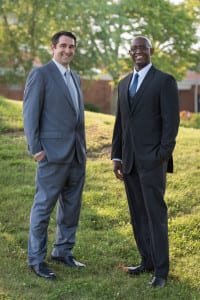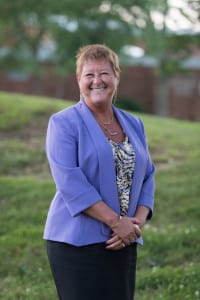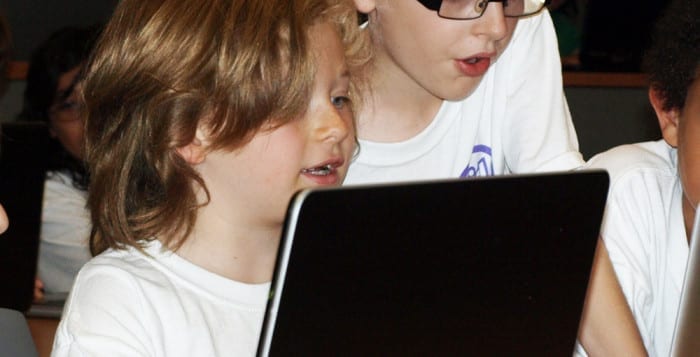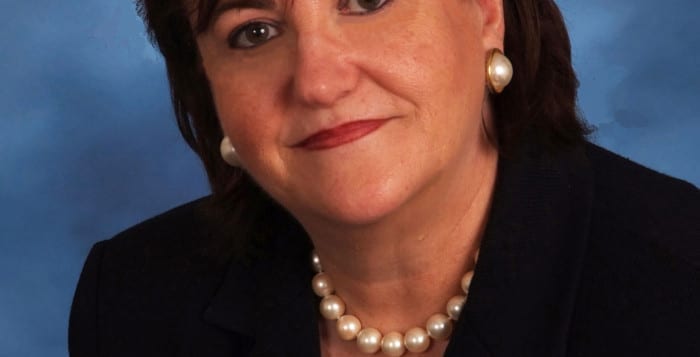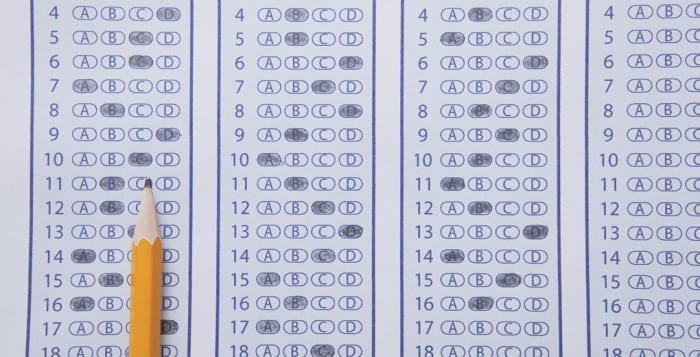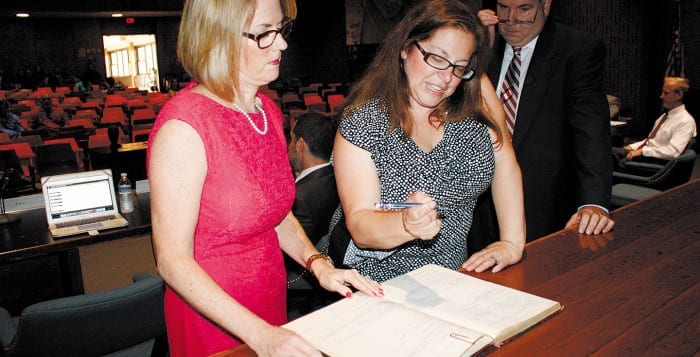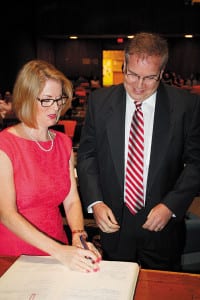By Rita J. Egan
It was a successful school year for 15-year-old Arunima Roy of Port Jefferson. The sophomore and high honor roll student at Earl L. Vandermeulen High School was recently chosen as an ambassador to Jane Goodall’s Roots & Shoots National Youth Leadership Council.
The Roots & Shoots council has many branches all over the world, according to Roy. Teenagers with a passion for saving the environment apply to the group in order to aid each other in their projects.
A member of her high school’s environmental club for the last two years, Roy said she got involved with Roots & Shoots when her Spanish teacher, Dawn DeLeonardis-Moody, who is also one of the faculty advisers of her school’s club, suggested she look into the organization. After visiting the website and researching the organization’s work, Roy said she became extremely interested in its youth council. After applying for the program and completing two interviews, Roy became an ambassador.
During the application process, Roy told the organization, “I want to help clean up the environment, and I want to help save and preserve natural habitats.”
DeLeonardis-Moody has been involved with Roots & Shoots for a decade, so she knew Roy would work well with the group. The Spanish teacher said as a sophomore, Roy is the perfect age to take on the role as she has a concept of the environment and community. She described the student as soft yet strong, who works well in a group and individually.
“Arunima … she can be quiet on the surface — she has such a compassionate soul — but she’s also a very hard worker and dedicated. So I see her as an upcoming leader, especially because she has that quiet compassionate side. But once you work with her you realize that her compassion and her passion are so strong, and she’s so in tune with nature,” DeLeonardis-Moody said.
In the past, Roy has worked on beach cleanups and most recently the Green and Clean 2015 event in Port Jefferson to raise awareness about local plants and Monarch butterflies. DeLeonardis-Moody said the student not only worked at the event, but it was partly Roy’s idea to have it, and she worked 8 months to prepare for the day.
The Port Jefferson student said as an ambassador, she will work on her future environmental goals with the school’s environmental club and will get support from Roots & Shoots and her fellow ambassadors.
Jonathan Maletta, co-adviser of the environmental club, said that Roy has the school group’s complete support when it comes to her future environmental projects. Maletta, who has also worked with the sophomore on the Science Olympiad, where she has won gold and silver awards on the regional level, said Roy is an intelligent student with a sound work ethic. “She’s an inspiration, and it’s nice to see someone of the younger generation lead by example, take charge and move in a sustainable direction,” Maletta said.
The club adviser said the student is currently working with the Jane Goodall Institute to recycle e-waste.
Maletta explained that when we recycle electronics and cell phones, we help conserve an ore called coltan, which is found in the Congo, where gorillas and chimpanzees live. Recycling reduces the need for Coltan and the disruption of the animals’ habitat. In addition, when it comes to recycling cell phones and other e-waste, fewer toxins are released into the environment.
Recycling is very important to Roy, and she wishes more people would do so, especially when it comes to items that are simple to discard, such as cans and bottles. She said it not only helps preserve materials, which would, for example, prevent us from cutting down trees or looking for ore and disturbing the habitats of animals, but it also affects us on a local level.
“It’s so important to recycle. There are often garbage cans and there are recycling cans right next to each other. I feel like if they just make the littlest effort to put it in the recycling bins instead of the garbage bins, it would make such a huge impact. The landfills are getting full of garbage, and we’re going to run out of places to put them. We don’t want our backyards to be filled with garbage,” Roy said.
Her advice to aspiring environmentalists is to get a group of friends together and to set easy goals. She said it helps to break things down into something as simple as collecting a certain number of things or filling one bin in a day. She also suggested organizing two groups to clean a beach or area, and make the cleanup a fun competition.
This summer, Roy will attend a Roots & Shoots retreat where she will learn about hydraulics. As for her future goals, she said she wants to be a physician with Doctors Without Borders. In addition to her dreams of becoming a doctor, Roy said that in her adulthood, she will continue to volunteer to help the environment.
“I see it as more of a stress reliever. I feel like I’m making an impact on the environment. I don’t see it so much as work as I see as it as being one with nature,” Roy said. “It would be a nice way to take some time off and get back to my roots, and just find some space for myself to think.”
When it comes to her future plans, especially her environmental goals, both of Roy’s club advisers believe she will accomplish a great deal.
“She’s just so humble, and I think that’s what makes her — that’s part of why she’s so good at this. She’s so quietly passionate and humble, but yet she’s dedicated and really in tune with the community and the environment. She really cares,” said DeLeonardis-Moody.
Formed in 1991, Jane Goodall’s Roots & Shoots is the youth-led community action and learning program of the Jane Goodall Institute. With more than 150,000 members in more than 130 countries, all working on local and global service projects, the program builds on the legacy and vision of Dr. Jane Goodall to place the power and responsibility for creating community-based solutions to big challenges in the hands of young people. Through the program, young people map their community to identify specific challenges their neighborhoods face. From there, they prioritize the problems, develop a plan for a solution, and take action.
For more information, visit www.rootsandshoots.org.


